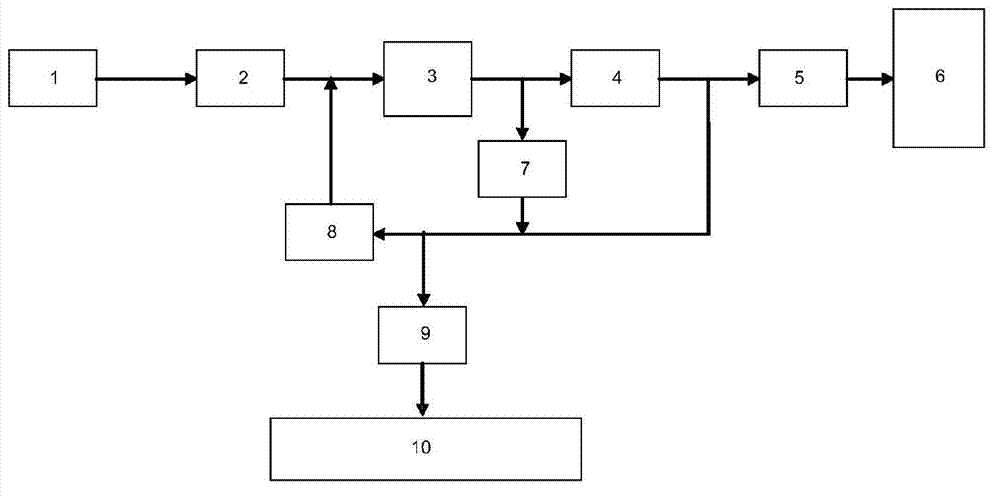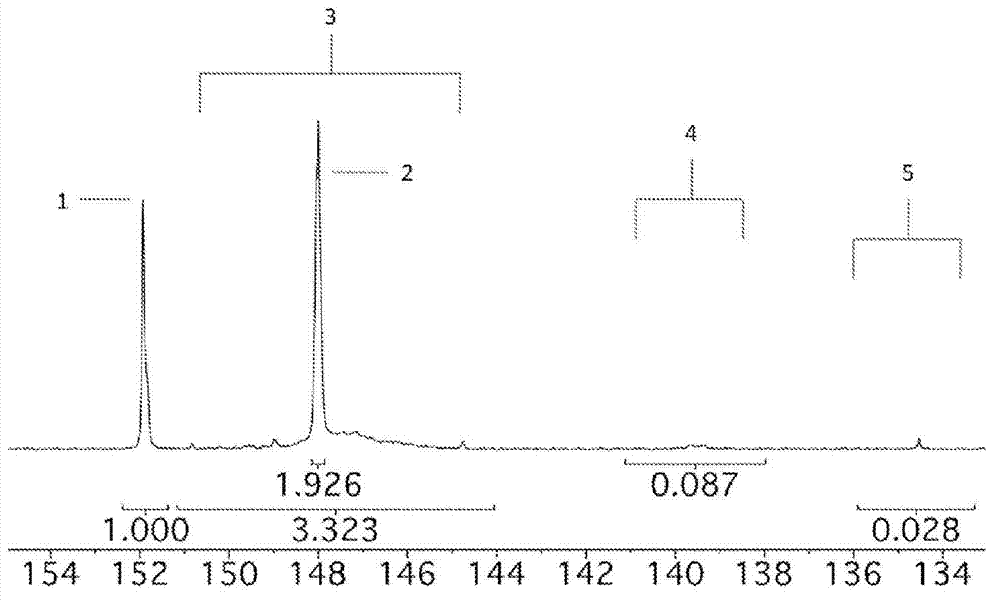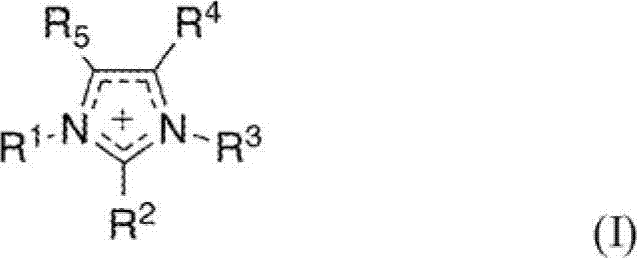Process for fibrillating lignocellulosic material, fibres and their use
A lignocellulose and fiber technology, which is applied in fiber raw material treatment, cellulose pulp post-treatment modification, raw material pretreatment, etc. Ease of reagent recovery, effect of reducing sulfur emissions
- Summary
- Abstract
- Description
- Claims
- Application Information
AI Technical Summary
Problems solved by technology
Method used
Image
Examples
Embodiment 1
[0079] Embodiment 1: Preparation of 1-methyl-3-methylimidazolium dimethyl phosphate ([mmim]Me 2 PO 4 )
[0080] A mixture of 1-methylimidazole (50ml, 0.519mol) was added to trimethylphosphate (60.7ml, 0.519mol) with stirring at 100°C over 4 hours. The solution was heated at 100°C for an additional 18 hours. through via 1 H NMR / CDCl 3 A sample was analyzed to determine completion of the reaction of the mixture. The mixture was rotary evaporated under high vacuum for 18 hours to give the product as a pale yellow oil (110ml). pass 1 H NMR analysis determined the product to be >99% pure.
Embodiment 2
[0081] Example 2: Preparation of 1-ethyl-3-methylimidazolium dimethylphosphate ([emim]Me 2 PO 4 )
[0082] A mixture of 1-ethylimidazole (50ml, 0.519mol) was added to trimethylphosphate (60.7ml, 0.519mol) over 4 hours at 120°C with stirring. The solution was heated at 120°C for an additional 18 hours. through via 1 H NMR / CDCl 3 A sample was analyzed to determine completion of the reaction of the mixture. The mixture was rotary evaporated under high vacuum for 18 hours to give the product as a pale yellow oil (110ml). pass 1 H NMR analysis determined the product to be >99% pure.
Embodiment 3
[0083] Example 3: Preparation of 1-ethyl-3-methylimidazolium methylhydrogen phosphonate ([emim]MeHPO 3 )
[0084] A mixture of 1-ethylimidazole (50ml, 0.519mol) was added to diethylphosphite (47.6ml, 0.519mol) over 4 hours at 140°C with stirring. The solution was heated at 140°C for an additional 18 hours. through via 1 H NMR / CDCl 3 A sample was analyzed to determine completion of the reaction of the mixture. The mixture was rotovaped under high vacuum for 18 hours to give the product as a light yellow oil (97ml), which was obtained by 1 H NMR analysis determined the product to be >99% pure.
PUM
| Property | Measurement | Unit |
|---|---|---|
| melting point | aaaaa | aaaaa |
| aspect ratio | aaaaa | aaaaa |
Abstract
Description
Claims
Application Information
 Login to View More
Login to View More - R&D
- Intellectual Property
- Life Sciences
- Materials
- Tech Scout
- Unparalleled Data Quality
- Higher Quality Content
- 60% Fewer Hallucinations
Browse by: Latest US Patents, China's latest patents, Technical Efficacy Thesaurus, Application Domain, Technology Topic, Popular Technical Reports.
© 2025 PatSnap. All rights reserved.Legal|Privacy policy|Modern Slavery Act Transparency Statement|Sitemap|About US| Contact US: help@patsnap.com



